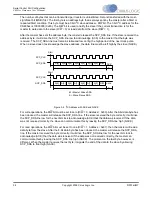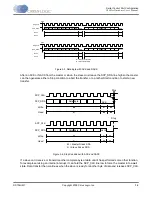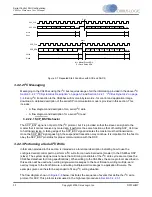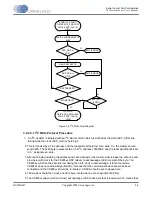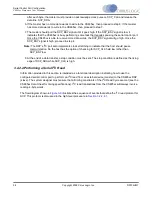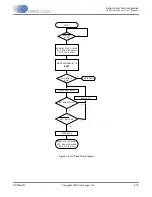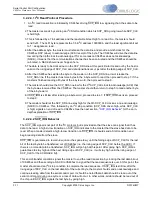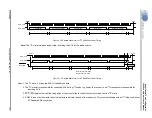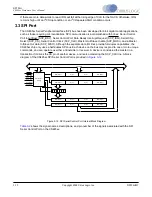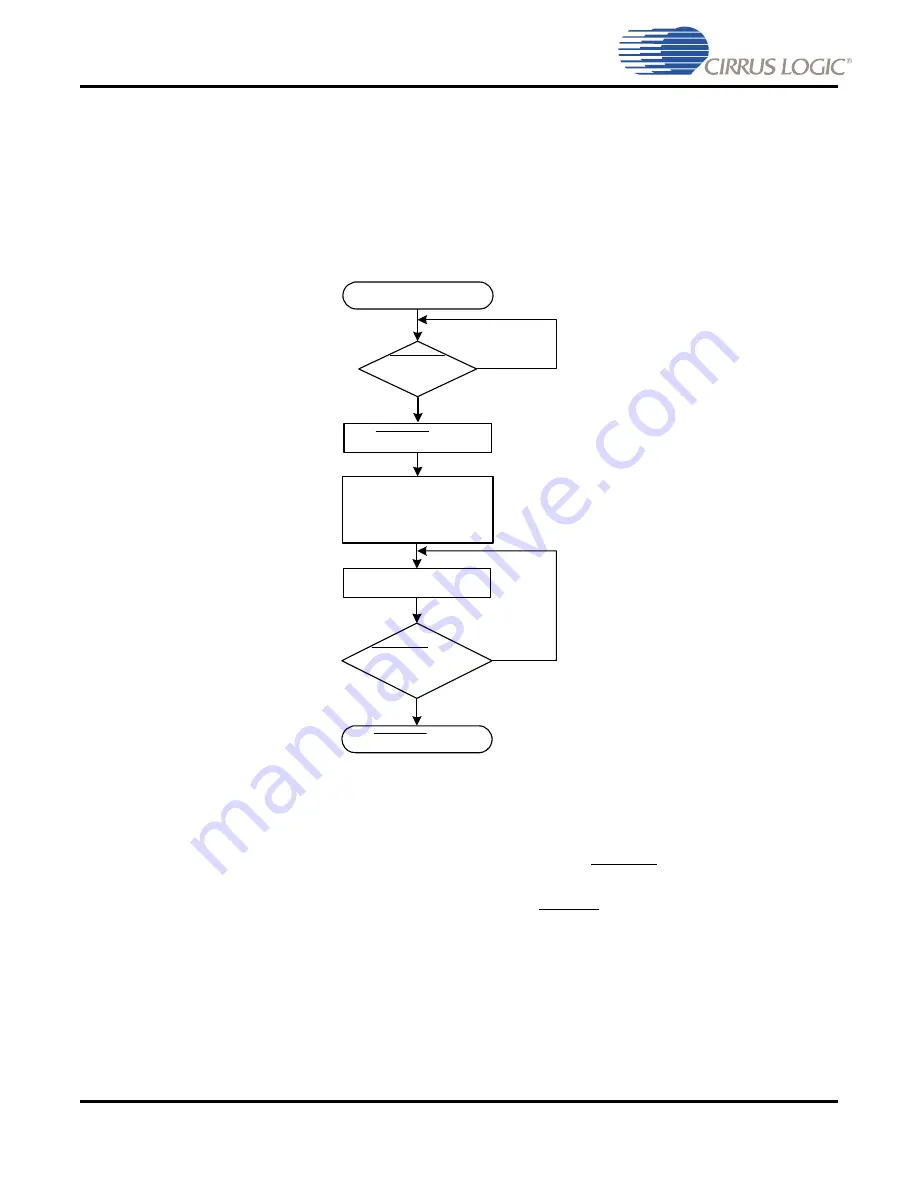
3-19
Copyright 2009 Cirrus Logic, Inc.
DS734UM7
SPI Port
CS485xx Hardware User’s Manual
When performing a SPI read, the same protocol is used whether reading a single byte or multiple bytes.
From a hardware perspective, it makes no difference whether communication is a single byte or multiple
bytes of any message length, so long as the correct hardware protocol is followed. The example shown in
this section can be generalized to fit any SPI read situation.
The flow diagram shown in
Figure 3-16
, illustrates the sequence of events that define the SPI read protocol.
This protocol is discussed in the high-level procedure in
Section 3.3.1.4.1
Figure 3-16. SPI Read Flow Diagram
3.3.1.4.1 SPI Read Protocol Procedure
1. A SPI read transaction is initiated by the CS485xx slave driving SCP_IRQ low to indicate that it has
data to be read.
2. The master begins a SPI transaction driving chip select (SCP_CS) low.
3. This is followed by a 7-bit address and the read/write bit set high for a read. So, the master should
send 0x81. The 0x81 byte represents the 7-bit SPI address 1000000b, and the least significant bit set
to ‘1’, designates a read.
4. After the falling edge of the serial control clock (SCP_CLK) for the read/write bit, the master can begin
clocking out the 4-byte word from the CS485xx on the MISO pin. Data clocked out of the CS485xx by
the master is valid on the rising edge of SCP_CLK and data transitions occur on the falling edge of
SCP_CLK. The serial clock should be held low so that eight transitions from low-to-high-to-low will
occur for each byte.
SCP_IRQ
(LOW)?
SCP_IRQ STILL
LOW?
SCP_CS HIGH
Y
N
Y
N
START
SCP_CS LOW
READ 4 DATA BYTES
WRITE ADDRESS BYTE
0x81

